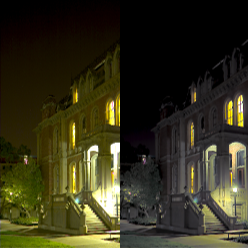Modelling
Graphics
Bangor University

Modern displays, such as the ones used in phones or tablets, are designed to work in bright and dark environments. When used in bright conditions, these devices increase screen brightness. However, when used in dim conditions, such as indoors when the lights are dimmed, it is beneficial to reduce the screen brightness. Doing so reduces the strain on the eyes and lowers the power consumption. However, below a certain brightness level (luminance) the image quality suffers, as the human visual system can no longer retain normal colour and detail perception. This makes small details invisible and causes washed-out colours. The method we propose can compensate for the appearance changes, making it possible to reduce screen brightness and thus lower both the eye strain and power consumption, and still preserve high image quality.